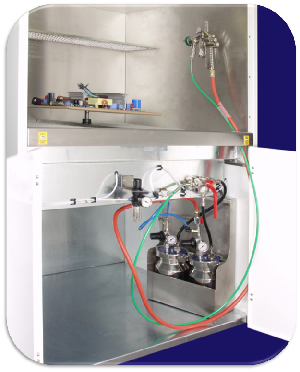Four thermal spraying processes
Thermal spray coatings are constantly finding new applications. They are often used when there is a need to provide protection from extreme environmental conditions such as high temperatures, corrosive chemicals or humidity.

However, they are cheap enough to use for less exacting purposes. Thermal surface treatments are widely used in aerospatial, automotive, construction and general manufacturing.
There are more surface treatments available today than ever before, including several different kinds of thermal spraying. Here are just four of the common variations.
High velocity oxy-fuel spraying
HVOF usually uses an acetylene-fueled torch, although ethanol varieties also exist. Adjustments to the nozzle cause a rapid acceleration, propelling the particles onto the surface. The coatings produced are very thin but very dense and non-porous. They adhere extremely well and have good durability. Their corrosion resistance is better than those deposited by plasma sprays, and the costs are low compared to most other methods.

Less intense lower-velocity flames can be used on less robust materials like plastic (sometimes by feeding in nitrogen).
Plasma Spraying
A plasma torch creates a very high temperature arc to vaporise the feed of coating material and propel it in a carrier gas; see the schematic at https://plasmajet.ro/en/plasma-sray/.
The energy of plasma spraying can modify the surface structure molecularly and is often used to engineer qualities like conductivity, stress tolerance or lubricity. A good range of coating materials is available for this method, including ceramics. Plasma spraying is often chosen for this adaptability; see https://www.poeton.co.uk/treatments for more details.
Vacuum Plasma Spraying
In a controlled chamber, it is possible to use lower temperatures and pressures and reduce damage to the target surface. The resulting surfaces are usually porous, so it is often used as a pre-treatment before other applications. This method is commonly used in the production of polyethylene mouldings, car bumpers and dashboard surfaces. As with ordinary plasma spraying, there is good scope to re-engineer surface qualities, including hydrophilic or hydrophobic properties.
Two-Wire Arc Spraying
In wire arc spraying, the coating material is fed in as two wires, which form the cathode and anode for a high-voltage arc. A stream of compressed air carries the molten material liberated by the arc onto the target. The two-wire method is most often used to apply relatively heavy coatings of metals like aluminium or zinc, and it is very cost-efficient.
